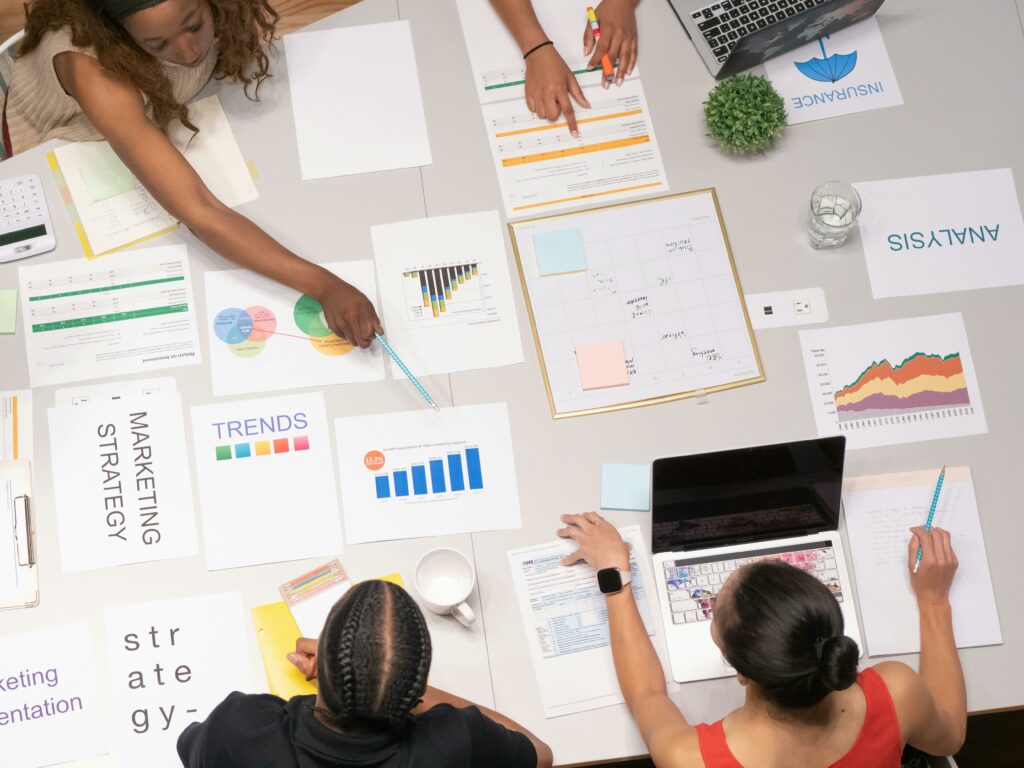Descubra ferramentas e técnicas essenciais para traduzir PDFs de forma eficaz. Explore a tradução automática, as ferramentas de Tradução Assistida por Computador (CAT), o conhecimento humano e estratégias práticas para superar layouts complexos.

Sumário
- Introdução
- Aproveitando a tradução automática (TA) para a eficiência
- Escolher a ferramenta CAT certa para tradução profissional
- Conhecimento humano: o elemento insubstituível
- Métodos de tradução para layouts de PDF complexos
- Escolhendo o fluxo de trabalho de tradução certo
- Conclusão
Introdução
No mundo interconectado de hoje, onde a informação e a colaboração transcendem as fronteiras geográficas a um ritmo sem precedentes, a procura por uma tradução de documentos precisa e eficiente tornou-se cada vez mais crítica. Entre os vários formatos de ficheiro utilizados, os Formatos de Documento Portátil (PDFs) destacam-se pela sua versatilidade e capacidade de preservar a formatação, tornando-os a escolha preferida para partilhar documentos. No entanto, a tradução de PDFs apresenta o seu próprio conjunto de desafios. Elementos incorporados como imagens, tabelas e layouts complexos complicam frequentemente o processo. Mas não tema, intrépido tradutor! Este artigo serve como o seu guia completo para dominar a arte de traduzir documentos PDF de forma eficaz.
Vamos explorar a eficiência da tradução automática (TA), aprofundar o domínio das ferramentas de Tradução Assistida por Computador (CAT) adaptadas para fluxos de trabalho profissionais e sublinhar o papel insubstituível do conhecimento humano para garantir a precisão linguística. Além disso, iremos equipá-lo com técnicas práticas para navegar por layouts de PDF complexos e ajudá-lo a selecionar o fluxo de trabalho de tradução ideal adaptado às suas necessidades específicas. Então, arme-se com o kit de ferramentas metafórico do seu tradutor e embarquemos nesta jornada para colmatar a lacuna linguística com confiança neste cenário global em constante evolução.
Aproveitando a tradução automática (TA) para a eficiência
A tradução automática (TA) revolucionou o panorama da tradução, oferecendo uma forma rápida e económica de dar o pontapé de saída no seu projeto de tradução de PDF. Veja como aproveitar o poder da TA para obter a máxima eficiência:
- Encontrar a sua correspondência de TA perfeita: Mergulhe no mundo vibrante das ferramentas de TA, com opções gratuitas e pagas disponíveis. As escolhas populares incluem o Google Translate, o DeepL Translate e o Microsoft Translator. Escolher a ferramenta certa é como escolher a chave perfeita para uma fechadura. Considere os pares de idiomas que precisa de traduzir, as classificações de precisão específicas para esses idiomas e quaisquer funcionalidades especiais que possam ser cruciais para o seu projeto.
- Preparar os seus PDFs para uma tradução impecável: Imagine um carro que precisa de uma afinação antes de uma corrida. Da mesma forma, otimizar os seus PDFs para TA garante uma jornada de tradução tranquila. Certifique-se de que os seus PDFs são digitalizações de alta qualidade ou documentos digitais bem formatados. Imagens desfocadas ou texto mal digitalizado podem lançar uma chave nas engrenagens da TA, dificultando a precisão. Se estiver a trabalhar com documentos digitalizados, considere utilizar o software de Reconhecimento Ótico de Caracteres (OCR). Pense no OCR como um tradutor para o seu computador, convertendo texto digitalizado num formato que a TA possa entender, fornecendo os melhores resultados possíveis.
- Construir o seu arsenal de memória de tradução (MT): Muitas ferramentas de TA ostentam uma gema escondida – a memória de tradução automática (MTA). Imagine um cofre digital que armazena frases e frases traduzidas anteriormente. À medida que utiliza a TA para os seus projetos, este cofre torna-se mais rico, melhorando a precisão das traduções para conteúdo semelhante no futuro. Isto é particularmente valioso para campos especializados com terminologia repetitiva, garantindo a consistência em todos os seus documentos traduzidos.
- O toque humano: A volta final Embora a TA ofereça um trampolim fantástico, lembre-se de que não é infalível. As traduções automáticas muitas vezes têm dificuldades com as nuances da linguagem, referências culturais e precisão específica do contexto. A revisão e edição humana são a volta final, garantindo que o seu PDF traduzido reflete com precisão o significado original, mantém o tom pretendido e é lido naturalmente no idioma de destino.

Escolher a ferramenta CAT certa para tradução profissional
Escolher a ferramenta de Tradução Assistida por Computador (CAT) apropriada é crucial para obter traduções profissionais, especialmente para projetos extensos que exigem precisão. Eis por que as ferramentas CAT são indispensáveis:
Gestão de terminologia: As ferramentas CAT permitem a criação e manutenção de glossários específicos do setor, garantindo a consistência na tradução de termos-chave e na manutenção da identidade da marca.
Utilização da memória de tradução: As ferramentas CAT oferecem funções avançadas de memória de tradução semelhantes à MTA nas ferramentas de Tradução Automática (TA). Ao integrar glossários existentes e utilizar segmentos traduzidos anteriormente, as ferramentas CAT melhoram significativamente a velocidade e a consistência da tradução, particularmente para projetos com conteúdo recorrente.
Integração de garantia de qualidade: As ferramentas CAT vêm equipadas com funcionalidades incorporadas, como alinhamento de segmentos, verificações de consistência e verificadores ortográficos. Estas funcionalidades agilizam o processo de revisão, capacitando os tradutores a concentrarem-se nos aspetos matizados da tradução.
Melhoria da colaboração: Certas ferramentas CAT incorporam capacidades colaborativas, promovendo uma comunicação perfeita e feedback em tempo real entre tradutores, editores e especialistas no assunto. Estas funcionalidades revelam-se inestimáveis para projetos complexos que envolvem diversas partes interessadas.
Em resumo, as ferramentas CAT oferecem soluções abrangentes para traduções profissionais, abrangendo gestão de terminologia, aproveitamento da memória de tradução, funcionalidades de garantia de qualidade e ferramentas de colaboração. Selecionar a ferramenta CAT certa pode melhorar significativamente a eficiência, a precisão e a consistência da tradução, levando, em última análise, a resultados linguísticos superiores.
Conhecimento humano: o elemento insubstituível
O conhecimento humano continua a ser indispensável na tradução de documentos, apesar dos avanços na tecnologia. Eis por que os tradutores humanos são insubstituíveis:
- Compreender o contexto e a nuance: As línguas abrangem nuances subtis, referências culturais e expressões idiomáticas que a tradução automática tem dificuldades em captar. Os tradutores humanos destacam-se na descodificação destas complexidades, garantindo que o documento traduzido transmite com precisão o significado pretendido, considerando ao mesmo tempo o contexto cultural e mantendo o tom apropriado.
- Manter o estilo e a legibilidade: Uma tradução proficiente deve fluir naturalmente no idioma de destino, ressoando com o público. Os tradutores humanos possuem a capacidade de adaptar o texto, preservando a clareza e a concisão, ao mesmo tempo que melhoram a legibilidade. Isto garante que o documento traduzido não só permanece preciso, mas também cativa e influencia os leitores de forma eficaz.
- Conhecimento do assunto: Em campos especializados como medicina, direito ou engenharia, a tradução precisa exige conhecimento do assunto. Os tradutores humanos com experiência nestes domínios navegam pela terminologia e conceitos técnicos com precisão, preservando a integridade científica ou legal do documento. O seu conhecimento garante que a informação complexa é transmitida de forma clara e abrangente ao público-alvo.
Em essência, embora a tecnologia ofereça ferramentas valiosas para a tradução, os tradutores humanos trazem um conjunto único de competências e conhecimentos que são indispensáveis para produzir traduções de alta qualidade. A sua capacidade de interpretar o contexto, manter o estilo e aplicar o conhecimento do assunto garante que o documento traduzido cumpre os mais elevados padrões de precisão, legibilidade e relevância.

Métodos de tradução para layouts de PDF complexos
Ao lidar com layouts de PDF complexos, a tradução requer técnicas especializadas para garantir a precisão e a legibilidade. Aqui estão as estratégias para enfrentar tais desafios de forma eficaz:
- Segmentação de texto: Divida o PDF em secções mais pequenas e mais fáceis de gerir para tradução. Isto implica separar o texto de imagens, tabelas e outros elementos. A utilização de software especializado pode ajudar a extrair texto de layouts complexos, agilizando o processo de tradução.
- Preservação da formatação: Manter o layout original do documento é fundamental, principalmente para elementos como tabelas, gráficos e figuras. Certas ferramentas de Tradução Assistida por Computador (CAT) oferecem funcionalidades como o bloqueio de segmentos, garantindo que o texto traduzido se alinhe perfeitamente com o layout original, preservando sua integridade visual.
- Localização de imagens e gráficos: Imagens e gráficos podem necessitar de adaptação para se adequarem ao público-alvo. Considere substituir o texto dentro das imagens por versões localizadas ou incorporar elementos visuais culturalmente apropriados. Isso garante que o documento traduzido ressoe efetivamente com o público-alvo, aprimorando a compreensão e o engajamento.
Ao empregar essas técnicas, os tradutores podem navegar pelas complexidades dos layouts de PDF com destreza, entregando traduções que são precisas e visualmente coesas. Essa abordagem não apenas facilita a compreensão, mas também mantém a integridade do design original do documento, garantindo uma transição perfeita entre idiomas, atendendo a diversos contextos culturais.
Escolhendo o fluxo de trabalho de tradução certo
Selecionar o fluxo de trabalho de tradução ideal é uma decisão fundamental influenciada pelas especificações do projeto e pelos recursos disponíveis. Várias abordagens existem, cada uma adaptada para atender às necessidades específicas de forma eficaz. Aqui estão algumas metodologias comuns a serem consideradas:
- Pré-tradução por MT + Revisão Humana: Esta abordagem combina a velocidade e a relação custo-benefício da Tradução Automática (MT) com a precisão da revisão humana. Ideal para traduzir rapidamente documentos de baixa complexidade, a pré-tradução por MT fornece uma tradução básica, que é então refinada por tradutores humanos para garantir precisão e coerência.
- Tradução Humana Tradicional: Em cenários onde a compreensão diferenciada e a sensibilidade cultural são fundamentais, a tradução humana tradicional se destaca. Este método envolve linguistas qualificados traduzindo meticulosamente o conteúdo manualmente, garantindo a precisão linguística e a adequação cultural. Embora possa ser demorado e relativamente caro, garante traduções de alta qualidade adequadas para materiais sensíveis ou especializados.
- Pós-edição da saída de MT: Aproveitando os recursos da Tradução Automática, esta abordagem envolve a geração de traduções iniciais por meio de mecanismos de MT e, subsequentemente, refiná-las por meio da pós-edição por tradutores humanos. Oferece um equilíbrio entre eficiência e qualidade, particularmente para grandes volumes de texto onde a velocidade é crítica, mas a precisão linguística não pode ser comprometida.
- Plataformas de Tradução Colaborativa: Essas plataformas facilitam a colaboração entre vários tradutores, editores e especialistas no assunto, agilizando o processo de tradução. Ao permitir a comunicação em tempo real e a troca de feedback, elas aumentam a eficiência e garantem a consistência entre as traduções. As plataformas colaborativas são particularmente benéficas para projetos complexos que envolvem diversos requisitos linguísticos e técnicos.
- Fluxos de Trabalho Híbridos: Combinando elementos de vários fluxos de trabalho, as abordagens híbridas adaptam os processos de tradução às necessidades específicas do projeto. Por exemplo, integrar a pré-tradução por MT com a tradução humana tradicional para projetos de grande escala pode acelerar a entrega sem sacrificar a qualidade. Da mesma forma, combinar a pós-edição com a revisão humana oferece uma solução flexível adaptável a diferentes tipos de conteúdo e prazos.
Em última análise, a seleção do fluxo de trabalho de tradução certo depende de fatores como escopo do projeto, orçamento, cronograma e padrões de qualidade desejados. Ao avaliar cuidadosamente esses fatores e escolher a abordagem mais adequada, as organizações podem garantir resultados de tradução eficientes e precisos, adaptados às suas necessidades exclusivas.
Conclusão
Em conclusão, dominar a tradução de documentos PDF requer uma combinação de ferramentas e técnicas estratégicas adaptadas aos desafios exclusivos apresentados por este formato. Ao longo deste artigo, exploramos várias metodologias para aprimorar a eficiência e a precisão da tradução de PDF, equipando os tradutores com as habilidades necessárias para navegar por layouts complexos e preservar a formatação perfeitamente.
Primeiramente, investigamos o poder da tradução automática (MT) como uma etapa inicial eficiente no processo de tradução. Embora a MT ofereça velocidade e escalabilidade, ela é complementada pela revisão humana para garantir a precisão linguística e a compreensão do contexto.
Em seguida, exploramos o campo das ferramentas de Tradução Assistida por Computador (CAT), que fornecem suporte valioso para fluxos de trabalho de tradução profissional. Essas ferramentas oferecem recursos como memória de tradução, gerenciamento de glossário e preservação de formatação, agilizando o processo de tradução e aumentando a consistência entre os documentos.
Além disso, ressaltamos o papel insubstituível da experiência humana na tradução. Os tradutores humanos trazem compreensão diferenciada, sensibilidade cultural e conhecimento especializado para a mesa, garantindo que as traduções ressoem efetivamente com o público-alvo.
Adicionalmente, fornecemos técnicas práticas para enfrentar os desafios apresentados por layouts de PDF complexos. Desde a segmentação de texto até a preservação da formatação e a localização de imagens, essas estratégias capacitam os tradutores a superar obstáculos e entregar traduções de alta qualidade.
Por último, enfatizamos a importância de selecionar o fluxo de trabalho de tradução ideal adaptado aos requisitos específicos do projeto. Seja envolvendo o aproveitamento da MT para eficiência, a utilização de ferramentas CAT para fluxos de trabalho profissionais ou a confiança na experiência humana para traduções diferenciadas, escolher a abordagem certa é crucial para alcançar os resultados desejados.
Em essência, ao aproveitar as principais ferramentas e técnicas discutidas neste artigo, os tradutores podem navegar efetivamente pelas complexidades da tradução de documentos PDF. Com uma combinação de metodologias estratégicas e prática diligente, eles podem superar as barreiras linguísticas e facilitar a comunicação perfeita em nosso mundo cada vez mais globalizado.
Se você quiser saber mais sobre o uso de PDFs na área da saúde para EMRs e outras aplicações médicas, você pode ler sobre isso em nosso artigo anterior do blog.



